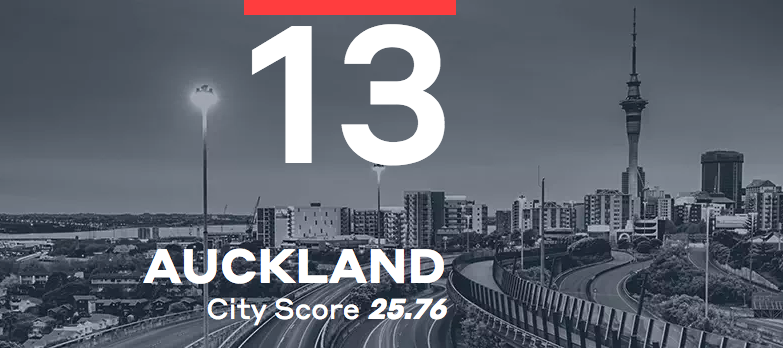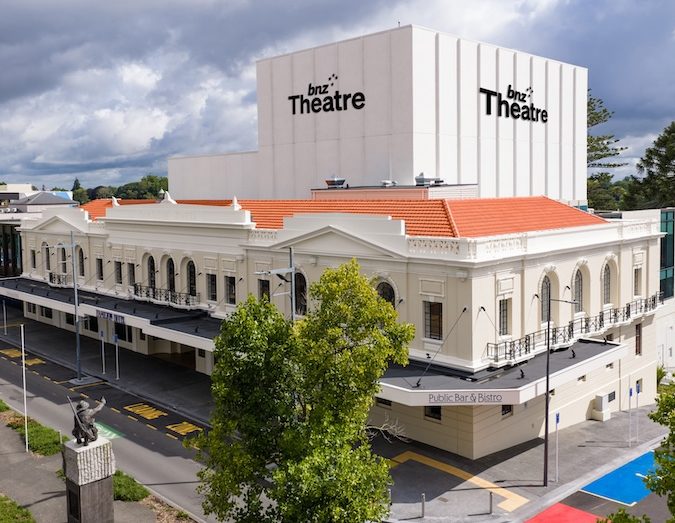Auckland was ranked 13th on WSP’s Global Cities Index. Here’s why – and what it needs to do to move up the list

The growth conundrum
The continued trend to urbanisation means we’re seeing growth at a level we’ve never had to deal with before. For many of the cities reviewed, the combination of significant population growth, historical under-investment in infrastructure, and fundamental technological transitions is a major challenge. At the same time, most cities are taking proactive steps to address climate change while trying to understand its future impact – in ways that generations before us haven’t had to.
 It’s the pace of change and the combination of factors at play which creates both challenges and opportunities for city makers. How do cities meet these challenges and harness opportunities to stay globally competitive? For Auckland – unsurprisingly, affordable housing came out as a material challenge, while more work is required to rapidly upgrade aging water infrastructure to meet city growth.
It’s the pace of change and the combination of factors at play which creates both challenges and opportunities for city makers. How do cities meet these challenges and harness opportunities to stay globally competitive? For Auckland – unsurprisingly, affordable housing came out as a material challenge, while more work is required to rapidly upgrade aging water infrastructure to meet city growth.
It’s all in the planning
Visionary long-term planning can prepare a city for success, even in the face of extreme uncertainty and change. The best example of the dividend of prior foresight is Copenhagen. This city started to embed long term and strategic planning in the post-war years and is now reaping the benefit of a world-class set of shared spaces and a culture that embraces a suite of mobility options.
Long term planning is rare and there are opportunities for cities that find themselves able to think ahead. Surprisingly our research showed only a handful of cities had strategic planning out beyond 2035 and Auckland performed well in this area.

The rankings
Being a future ready city requires long-term vision, planning and decision-making that looks beyond electoral and budget cycles. Standout cities recognise the importance of this and have the ability to put in place planning and investment frameworks that deliver not just for today, but for generations to come.
Housing pain

Unsurprisingly, housing supply and housing affordability remain one of our biggest challenges. Strong urban population growth means central and local governments are focusing on the supply of affordable housing. The Auckland Plan 2050 identifies the need to improve housing availability through several directions, including a quality urban form, accelerating the construction of homes and the provision of quality public spaces.
We’re rocking tech
 Auckland is a regional leader in tech. The intersection of the digital economy with mobility, urban systems and places is key. The work that’s been done in laying the physical infrastructure will allow us to leverage opportunities in future mobility and energy.
Auckland is a regional leader in tech. The intersection of the digital economy with mobility, urban systems and places is key. The work that’s been done in laying the physical infrastructure will allow us to leverage opportunities in future mobility and energy.
While Auckland doesn’t have a standalone digital strategy, it is becoming increasingly prominent in the innovation and technology space through a combination of population density, availability of fibre and fast internet, and the number of private companies investing in digital technology and innovation.
Wynyard Quarter is emerging as the innovation precinct of Auckland, occupied by leading organisations including WSP Opus, Fonterra, Datacom, IBM, Microsoft and Air New Zealand. Auckland, like most cities in the report, needs to understand how to leverage the intersection between the digital economy and the built environment.
Breaking our car dependency as city density increases
 Auckland’s relatively lower rating on mobility reflects our high dependency on cars, and heavy dependency on road for freight and logistics. Auckland now has a long-term strategic transport plan and investment in place, but it’s coming off a low base and we’ve been relatively slow to adopt alternative mass public transit options such as light rail.
Auckland’s relatively lower rating on mobility reflects our high dependency on cars, and heavy dependency on road for freight and logistics. Auckland now has a long-term strategic transport plan and investment in place, but it’s coming off a low base and we’ve been relatively slow to adopt alternative mass public transit options such as light rail.
Auckland has an immense challenge ahead to embrace the social licence for compact cities. Copenhagen is one of the leading global cities in this regard having invested over many years in public transport, cycling and pedestrian infrastructure. Despite Copenhagen being a global logistics hub, and its port being one of the busiest globally, only 58 percent of freight goes by road compared with over 85 percent in Auckland. Culturally we need to get to a place where the car is no longer king, where we are comfortable with urban density and plan our city accordingly.
The future is uncertain so we must design for flexibility
All global cities are grappling with the challenges and opportunities created by megatrends such as climate change, societal change, technology and resources. With the future uncertain the best policy is for city makers to design with flexibility in mind and adapt as we get a better understanding of the specific impacts. Climate change readiness is one element of a future ready city where Auckland is a regional leader. As a member of the C40 Cities Climate Leadership group it has committed to a 40 percent reduction in emissions by 2040 (from 1990 levels).





